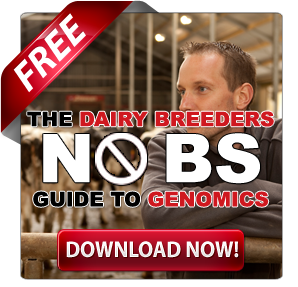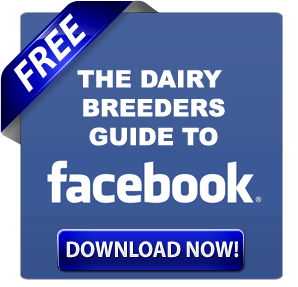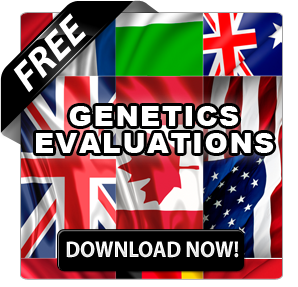Learn how seaweed can slash dairy methane emissions and enhance ROI. Can this natural remedy revolutionize your farm’s sustainability and profits?
More attention is paid to the dairy industry because it releases methane, a potent greenhouse gas that worsens climate change. But what if the answer to eliminating these pollutants resounds in the ocean? Seaweed could be a big deal for dairy farming because it can significantly cut methane emissions. Adding seaweed to cattle feed could cut methane emissions from cows by up to 82%, according to research from the University of California, Davis [UC Davis research]. Not only is this good for the environment, it’s also good for business. Think about the two advantages: a better environment and more money. There are as many choices as there are waves in the ocean.
Methane: The Hidden Giant of Dairy Farming Emissions
The release of methane during dairy production is a significant cause for concern. Methane is a potent greenhouse gas that keeps heat in the atmosphere about 25 times better than carbon dioxide over 100 years [EPA]. Enteric fermentation is the primary way that dairy cows make methane. The EPA says that about 10% of all greenhouse gas emissions in the United States come from agriculture, with livestock being the most significant source.
For example, the EPA says a dairy cow produces about 220 pounds of methane yearly. Given the millions of dairy cows in the US, methane emissions aren’t a minor problem; they’re a big problem that needs real solutions.
We can’t ignore how this affects the environment. Greenhouse gas emissions, like methane from dairy production, have a significant effect on the health of our planet, and we have looked into our business. As new emissions goals and environmental laws are implemented, regulatory pressures are rising. Do you feel the heat of these problems? Many dairy farmers aren’t sure how to make changes without reviewing their budgets. We need solutions that think about both the environment and the economy at the same time.
Seaweed: The Secret Weapon in Cutting Methane Emissions
Seaweed isn’t like other plants that grow near the coast; its unique properties can help dairy farms reduce methane emissions. What’s different about seaweed? Let’s get started.
Bioactive chemicals like bromoform are found in large amounts in some types of seaweed, especially Asparagopsis. This chemical is crucial for stopping the enzymes in a cow’s digestive tract that make methane. These enzymes help a biological reaction make methane when cows digest their food. Bromoform dramatically reduces the production of methane by blocking these enzymes.
A Journal of Cleaner Production study found that giving cows minimal Asparagopsis—about 2% of their diet—could cut methane emissions by more than 80%. This is a significant drop, showing that seaweed could be a good long-term option for dairy farmers who want less environmental impact.
Have you ever considered how a slight change to the feed could have such a significant effect? Because of how it is made, seaweed is a natural, effective, and very cheap way to reduce one of the most significant sources of greenhouse gas emissions from dairy farming.
Seaweed: The Miracle Additive for Dairy Farmers
So, how precisely can using seaweed in calf feed lower methane emissions? It’s easier than you would imagine. When cattle digest their meal, bacteria in their stomachs (especially the rumen) break it down. This process generates hydrogen and carbon dioxide, which certain microorganisms convert to methane, a potent greenhouse gas.
The seaweed Asparagopsis taxiformis has chemicals that impair this mechanism. According to a CSIRO study, these chemicals, particularly bromoform, may considerably inhibit the activity of methane-producing microorganisms. This means that when a cow consumes seaweed, the chemicals in the seaweed interfere with the microbes in the cow’s stomach, preventing them from producing methane during digestion.
According to Dr. Rob Kinley, a lead researcher at CSIRO, “When we add a small amount of this seaweed to a cow’s diet, it creates a reaction that stops the microbes from making methane without affecting the animal’s digestion or productivity” [CSIRO].
Studies [ScienceDirect] have shown that adding 0.2% seaweed to the diet may lower methane output by up to 80%. This is a win-win. Situation: The cows stay healthy and productive, and you contribute to a cleaner, greener environment.
The Financial Perks of Seaweed: Your Golden Ticket?
When you consider investing in new procedures, the financial benefits must stack up, right? Seaweed might be that golden ticket. One of the immediate benefits is cost reductions. Consider using less feed for your cattle. Cows released less methane when fed seaweed, according to trials [USDA]. Consider the potential savings over a year!
Now, let us discuss milk production. Healthy cows generate more milk. Early research suggests that cows given seaweed supplements may have higher milk production. A study by the University of California, Davis, found that adding seaweed to cattle diets might improve milk output by up to 10% [UC Davis]. But what about the taste and quality of the milk? Studies have shown that the milk from cows fed with seaweed is not only as good as conventional milk but also has added health benefits due to reduced methane emissions. More milk equals more income, plain and easy.
But that is not all. The government acknowledges the environmental advantages and possible financial savings for seaweed farmers. The USDA provides subsidies and incentives for implementing environmentally friendly measures, including a [specific amount] subsidy for every cow fed with seaweed. Such incentives make it even more cost-effective since they allow you to test something that might save you money and increase your earnings.
Finally, the financial advantages of seaweed may considerably increase your ROI—less feed, more milk, and government help. Isn’t it time to examine seaweed as a potential investment in your agricultural operation?
Turn Your Dairy Farm Into an Eco-Friendly Powerhouse
Imagine changing your dairy farm’s operations while drastically reducing emissions. Farmers worldwide are using seaweed to achieve this goal.
One famous case is California, where a dairy farmer added seaweed to his cow diet. According to research conducted at the University of California, Davis, methane emissions were reduced by more than 50% in only a few months. “It has been a game changer,” he adds. We have cut emissions significantly, and our herd’s health and milk production have remained stable.”
Across the Atlantic, in Ireland, another dairy farm saw similar results. Incorporating seaweed resulted in a 30% decrease in methane emissions and a substantial improvement in cattle digestion. “We were skeptical at first,” says the farmer, “but the results speak for themselves.”
Furthermore, a farm in Australia saw increased production after transitioning to a seaweed-infused diet. According to their analysis, milk output rose by 10%, owing to improved overall cow health. The Australian government has noticed and is exploring subsidies for seaweed additions in cow feed.
Can you see the possible advantages to your farm? Reduced emissions, happier cows, and increased milk output can all be achieved with a seaweed supplement. These success tales are not unique examples; they demonstrate what is possible. Are you prepared to pioneer this transformation in your agricultural practices?
Ready to give seaweed a shot on your dairy farm?
Here’s how you can get started
- Sourcing Seaweed: Begin by locating trusted vendors. Look for products with organic certifications and honest sourcing procedures. Ask other dairy producers who have previously used seaweed for ideas. You may also ask agricultural institutions or extension organizations for a list of reputable vendors.
- Incorporate Seaweed into Feed: Introduce seaweed gradually into your cattle’s feed to prevent intestinal problems. Begin with a tiny dose and gradually raise it over a few weeks. Standard practice recommends 1-2% of dry feed consumption. Consult a livestock nutritionist to adjust the amount for the best outcomes.
- Monitor and Measure: As you add seaweed, keep a watchful eye on your cows’ health and milk output. Track methane emissions using existing technologies or collaborate with researchers who can offer methane monitoring equipment. This information will allow you to examine the effect of seaweed and make any required changes.
Best Practices
- Ensure the seaweed is free from contaminants and heavy metals.
- Mix the seaweed thoroughly with other feed components to ensure even distribution.
- Regularly check for changes in the cows’ behavior, health, or milk yield.
- Engage with your local agricultural extension for ongoing support and updates on best practices related to seaweed usage.
These steps help you smoothly integrate seaweed into your dairy operations, potentially reducing methane emissions and improving sustainability.
The Other Side of the Coin: Challenges with Seaweed Integration
While the advantages of seaweed in lowering methane emissions are apparent, it is essential to examine certain obstacles. First, the cost of seaweed might be high. Are you willing to bear higher feed expenses? This is not a one-time expense; it is a continuing investment. Furthermore, seaweed availability might fluctuate. Not all places have easy access to seaweed providers, which may increase transportation costs and logistical issues.
Then there’s the subject of adding seaweed to your cows’ meals. It might be challenging to mix it uniformly and ensure that all animals ingest the appropriate quantity. Do you have the necessary equipment and procedures in place to handle this?
Of course, solutions exist. Some growers are collaborating to purchase seaweed in bulk, lowering expenses. Others are investigating local supplies or the potential of growing seaweed themselves. Innovators in the feed business are also working on more efficient methods of integrating seaweed into conventional feed mixes.
So, do you find these obstacles manageable? Yes, it’s a riddle, but one that may be worth solving for the sake of your farm’s production and environmental impact.
Seaweed: The Future of Sustainable Dairy Farming
Seaweed could change the way sustainable dairy production is done. New research suggests that different kinds of seaweed may have different health benefits, and scientists are working on making them easier to absorb. For instance, researchers are looking for ways to standardize the nutrition in seaweed so that it is the same for all herds and all areas.
New technologies like ocean aquaculture have the potential to make seaweed easier and cheaper to obtain. This new idea might lower costs, which means that even the smallest dairy farms could use it. Farming seaweed lowers methane levels and may act as a carbon sink, adding to its environmental benefits.
As we consider these accomplishments, one question comes to mind: Are you ready to contribute to this sustainable future? Using seaweed makes you look like a forward-thinking farmer, which is good for the environment and the farming industry. Are you going to jump?
The Bottom Line
We’ve discussed seaweed’s many benefits, such as lowering methane emissions and making your business more profitable. Consider turning your dairy farm into an eco-friendly powerhouse that makes much money. Seaweed is a good choice because it helps dairy farms stay in business and make money at the same time. However, figuring out the problems is essential for making a wise choice.
One question remains: Are you willing to try the seaweed solution? It could have significant benefits for the environment and the economy.
Key Takeaways:
- Seaweed added to cattle feed can reduce methane emissions by up to 80%.
- Seaweed represents a sustainable solution for the dairy industry.
- Dairy farming contributes to significant methane emissions, a potent greenhouse gas.
- Research supports seaweed’s effectiveness in emission reductions.
- Adopting seaweed in feed can help balance environmental and economic demands.
- Government subsidies and incentives are available to promote seaweed usage.
Summary:
Imagine a world where dairy farms could significantly cut their methane emissions with a simple dietary change. That’s the promise of seaweed. By adding it to cattle feed, farmers can slash methane emissions by as much as 80% [Agriculture.com]. “Seaweed in cattle feed could be a game-changer for the dairy industry, paving the way for more sustainable farming practices,” says Dr. Mark Jones, Agricultural Scientist [Dairy Farmers of America]. The dairy sector significantly contributes to methane emissions, a significant greenhouse gas. Research from the University of California, Davis, shows that including seaweed in cattle feeds could reduce these emissions by up to 80%. Dairy cows produce methane primarily through enteric fermentation, making up 10% of US greenhouse gas emissions. As regulatory pressures rise, many dairy producers struggle to balance environmental responsibility and economic reality. Seaweed emerges as a natural, effective, low-cost alternative, with the government providing subsidies and incentives to encourage its use.
Learn more:
- Dairy Farmers Boost Profitability through Sustainable Carbon Practices
- Effective Feeding Strategies to Lower Emissions: Reducing Dairy Farm Methane
- Revolutionizing Dairy Farming: Reducing Methane Emissions via Genetic Selection in Cattle
 Join the Revolution!
Join the Revolution!
Bullvine Daily is your essential e-zine for staying ahead in the dairy industry. With over 30,000 subscribers, we bring you the week’s top news, helping you manage tasks efficiently. Stay informed about milk production, tech adoption, and more, so you can concentrate on your dairy operations.







 Join the Revolution!
Join the Revolution!




